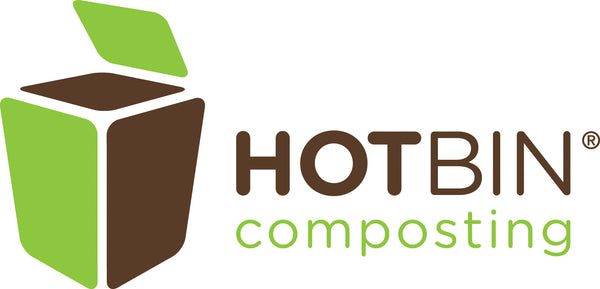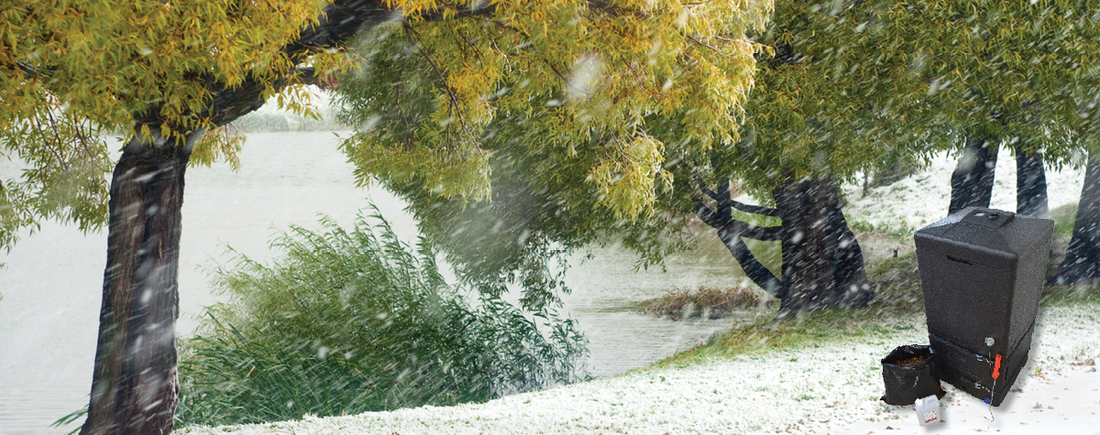Understanding how composting works can be considered a continuous learning experience, as the composting heap inside a composting device not only depends on the device and the material it’s made of, but on other variants such as the outside temperature, and the type of mixed-waste added among some.
Composting in Cold Weather
When composting in cold weather, we are faced with various challenges. Some tricks can be used to tackle them. However, knowing how your composting device works helps tremendously in determining how to compost successfully in cold weather.
Here are some ways to make cold weather composting a success. Bacteria living in a hot composting pile thrive at 104-140°F. However, as outside temperatures drop and become colder, your compost pile can freeze until warm weather returns, unless a plan is enacted. Here are some remedies to explore to continue composting all-year-round:
- Keep the carbon sources such as leaves and wood-chips dry. Wetness from rain and snow saturates food waste making it necessary to keep the moisture a good-moisture balance in your composting pile.
- Insulation – this is another important tool for protecting and maintaining the composting process going forward in cold weather. HOTBIN thick insulating walls provides the necessary insulation to keep the composting process going in winter.
- Freeze protection - Depending on the temperatures where you live, the proper carbon resources and insulation properties of your composting device, may not stand a chance to maintain its internal properties against the cold. In other words, too much heat is being pulled away when outside temperatures are as low as -10 to -50 degrees Fahrenheit. The recommended solution depends on a variety of factor such as the location of the device (I.e. exposed to windy conditions, etc.).
- Starting your compost pile in cold weather – this is challenging as piles tend to become wet and cold. Although you can continue or keep your pile going if the internal temperatures are within parameters, re-starting it is more difficult. This is why it is recommended to start the composting process in warm weather, so that when the cold weather arrives, your composting pile is already hot and thriving! Also important… the larger the compost pile is, the more capacity it has for keeping and maintaining its internal heat at a desired temperature.
- NEW TIP/TRICK LEARNED: If you need to start a new composting pile during cold weather, one trick is to move the device indoors (I.e., garage, back deck against warm walls, etc. versus open field/areas), start a small batch of compost and move it outside once the compost temperatures have started to rise. By frequently monitoring temperatures, constantly adding batches of composting waste and keeping the carbon resources as dry as possible, your composting pile will be armed and ready for any weather.

